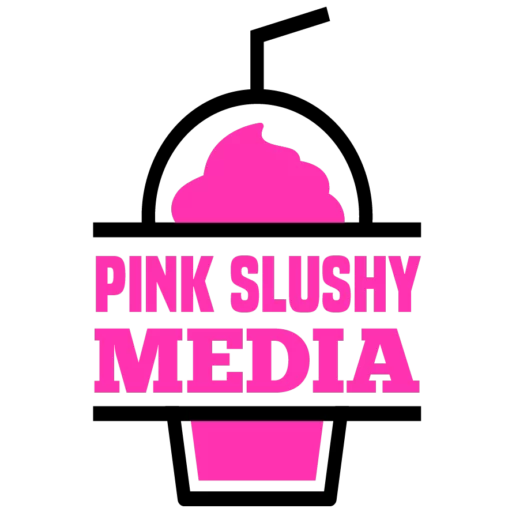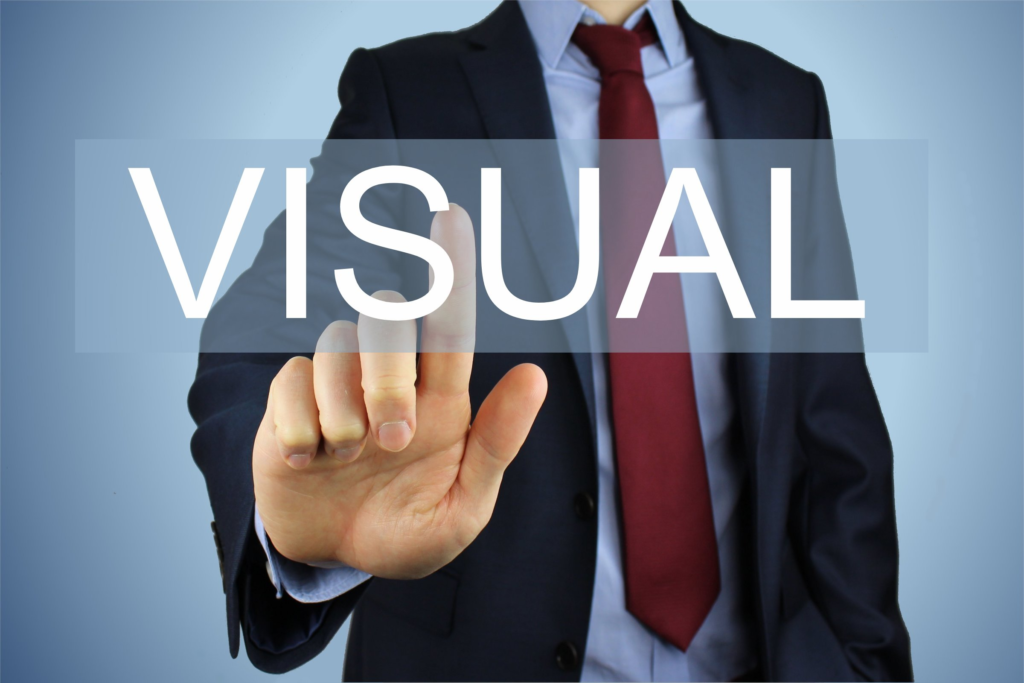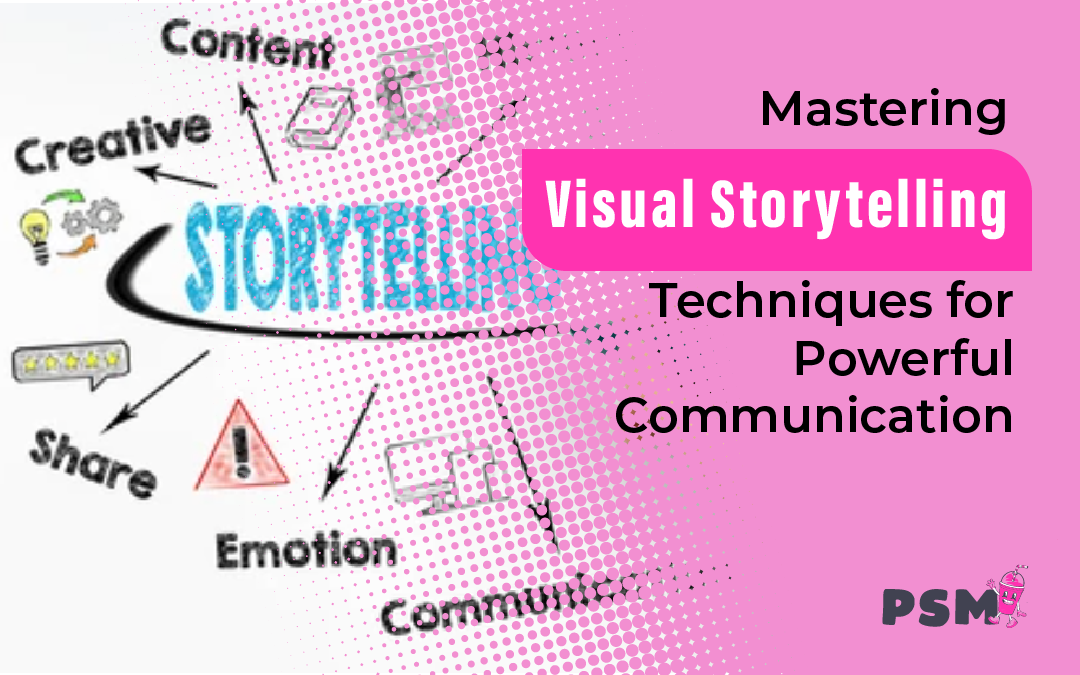Ever felt lost in a sea of marketing strategies, wondering how to truly connect with your audience? Maybe you have asked around, but didn’t get a good answer. Showing, not telling, could work. Pictures might do the trick. Expect big things; this is one seriously strong tool. People find them helpful for many things; they are versatile. Pictures and graphics really make things pop. Weave a narrative with images, videos, and graphics.
Visual storytelling isn’t a new concept. Think about those ancient cave paintings in Indonesia – they’ve been telling visual stories for over 45,500 years, as detailed in this article from The Guardian. From the very beginning, we’ve used images to communicate experiences and information. Those early examples really show it.
Table of Contents:

- Why Visuals Pack a Punch
- Visual Storytelling: More Than Just Pretty Pictures
- Visual Storytelling in the Digital World
- Putting Visuals into Action: Practical Applications
- Key Ingredients for Effective Visual Storytelling
- FAQs About Visual Storytelling
- What is Visual Storytelling?
- Visual storytelling packs a punch. It powerfully conveys ideas and experiences; words alone can’t do it justice. Consider the emotional resonance of a single photograph, compared to a paragraph of description.
- How Can I use Visual Storytelling for our brand?
- What are some examples of good Visual Storytelling Techniques?
- Visual storytelling: A good way to explain hard-to-grasp ideas?
- Conclusion
Why Visuals Pack a Punch
Our brains love visuals. As research shows, the human brain has over half its area devoted to processing visual information. It’s a no-brainer then, that visual content is prioritized by the human mind.
Scientists at MIT who study the brain conducted a study. What did they find? That we could pinpoint images in just 13 milliseconds! We’re wired to understand and remember visuals quickly and accurately. Studies show we can remember over 2,000 images really well—about 90% accuracy—even after a few days pass.

We see the world through pictures; let’s use that to connect better. About 65% of people are self-described, visual learners. The impact of visual aids on learning is clear: seeing is believing, and believing leads to understanding. Think of a complex math problem—a diagram can make all the difference.
Visual Storytelling: More Than Just Pretty Pictures
Visual storytelling is a critical skill that goes beyond using pictures to communicate. A message shared in the form of images, graphics, illustrations, or any visual media is engaging in visual storytelling.
This also gives readers the means to consume content in ways they best receive it, visually. When a visual narrative is done right, it better informs and communicates with your target audience.
Making Your Message Stick
Images do so much more than words can ever achieve by themselves. Incorporating this element will make a big difference. The way things look really matters. Improving your message writing helps people remember what you said. Consider this… People remember things better when you explain them clearly. Adding images makes your message stick. People will recall it longer.
Viewers will understand the story more easily with this method. Plot, characters, setting—the building blocks of any tale. Their internal monologue buzzed with the concept; a whirlwind of possibilities and considerations swirled within. Think about trying to assemble a bike from a series of word-only messages – how confusing. Now, compare that with having an illustrated picture to represent each phase; the job suddenly becomes a manageable series of small achievements.
Emotional Connection is Everything

Visuals do more than just clarify. Visual elements evoke emotion, forging a powerful emotional connection. We’ve all experienced the joy of seeing someone or something again after a long time has gone by.
Visual storytelling offers more than facts. Viewers feel a connection; it’s a shared experience. Emotional content gets noticed. It sticks with people, and they’re more likely to pass it along – maybe even to people all over the world.
Visual Storytelling in the Digital World
The online world is powered by visual information, making this means of information-sharing more important than ever. Social media is highly dependent on imagery. What are people looking for? It depends on the person, doesn’t it? Happiness? Success? Love? The answers are as varied as the people themselves. Stories that grab you. Their possessions. Don’t underestimate the power of a good illustration; they’re a big deal. Imagine a world without them—dull, right? They’re what add the pizzazz.
Seeing things makes information stick. It’s easier to recall later. Facts spring to life; they become entertaining. Talking to people today needs this. Think texting, emailing, even talking on the phone.
The Rise of Video Content
Data is especially telling, pointing to a future dominated by video content. Video is predicted to dominate consumer content, reaching a whopping 82%! Online data flow is pretty wild. The year was 2022. The rise in mobile video use goes even further, having grown 17-fold since 2012.
On platforms like Facebook, Buzzsumo’s research found posts with images get over twice the engagement. Adding more frequent pictures into written pieces can significantly increase online impact. The amount of visual content shared in the social space is at an all-time high, which is a trend to capture attention.
Visuals in Marketing Campaigns
As technology advances, marketing benefits through using illustrations. Visuals are part of good marketing campaigns. These are remembered more by viewers when illustrations are paired with words.
| Key Elements of the Campaign | Description |
|---|---|
| Emotionally moving video content | The video touches on universal themes. There’s real meaning here; it’s significant. It’s not trivial; it’s profound. |
| Message of giving | It speaks to our human side of community. This unites us with a common purpose; we’re all in this together. |
| Connection with the target audience | Images and videos build an emotional bond. This connects better to viewers and can be used with other marketing materials . |
Putting Visuals Into Action: Practical Applications

Using a picture really can be equivalent to the detail that is described by one thousand words. As such, creating content strategies that heavily weigh the visual space for storytelling, visual methods should be considered. Top visual social media platforms need this the most.
Social Media: A Visual Playground
Social media is where visual storytelling shines. Take the popular short-form video features as a prime example of reaching audiences.
Choosing visual storytelling to elevate and highlight content offers advantages when connecting in these visual-driven online settings. Utilizing platforms effectively is key to successful brand marketing.
In the competitive arena of digital fashion, the power of a captivating visual is undeniable. A single image can convey style, quality, and brand identity more effectively than any amount of text. Consider the impact of a well-crafted photograph on Instagram versus a simple product description. The visual is far more engaging.
Thinking about… Stories told with pictures. Digital spaces? This alters everything; our approach to them is different now. It’s about making pictures. Digital fashion needs a big boost to really take off. Think of it like this: without a solid impact, the industry struggles to stay relevant.
The details are waiting for you. Explore inside. Digital fashion relies heavily on strong visuals. A picture is worth a thousand words, and in the fast-paced world of online fashion, that saying rings truer than ever. Pictures really get the point across, don’t they?
Key Ingredients for Effective Visual Storytelling

Creating content for your messages should never ignore the importance of visuals. Below are core ideas for making the most of your visual design.
1. Know Your Audience
Understand the target audience: what motivates them and what story do they want to experience? Design content that resonates with them personally. Tailor your visual elements to their preferences and interests.
2. Have a Clear Message
Every story needs a central point. This is part of having good narrative structure. A good message shows your audience exactly what you mean.
3. Evoke Emotion
Tap into feelings. Do you want people to feel happy, inspired, or perhaps even a bit sad? Emotional connections make stories stick and also helps in creating brand storytelling.
4. Show, Don’t Just Tell

Let visuals carry the weight. You should not over-explain with text when you already provide an insightful illustration. Leverage the power of visual media to convey your message effectively.
5. Keep it Simple
Too much complexity confuses the situation and impacts a visual story. Viewers need an illustration they immediately understand. Keep your images simple and easy to understand.
6. Quality Matters
High-quality visuals show you are worth viewing and creates professionalism. Graphic design quality influences perception. Your message deserves top-notch visuals; make sure they reflect that.
7. Stay Authentic
Real, human stories have more meaning. Always show integrity with true illustrations of life that can actually help your audience. Being real builds trust; honesty earns respect.
FAQs About Visual Storytelling
What is Visual Storytelling?
Visual storytelling is communicating a narrative primarily through visual elements like images, videos, and graphics. It’s all about making a story come alive—visually stunning and emotionally powerful. This has a long history in public relations; lots of folks have found it useful.

Visual storytelling: It’s not just about pretty pictures; it’s about communicating effectively and creating a strong message that people will remember.
Our brains process visual information much times faster than text. Visual storytelling grabs attention, clarifies meaning, and boosts how well people remember. Also people prefer visual content.
How Can I use Visual Storytelling for our brand?
Identify your brand’s core message and target audience. Use high quality photos, videos, and design elements. Create visuals that connect emotionally with the type of customers that use your brand.
What are some examples of good Visual Storytelling Techniques?
Here is a quick list of things that makes content shine.
- Using a strong central visual.
- Employing a consistent color palette.
- Creating a clear visual hierarchy.
- Choosing high quality images.
Explaining hard-to-grasp concepts: Visuals: the answer?
Absolutely, visual storytelling can simplify complex topics. Using illustrations or videos like an explainer video, complex ideas are broken into smaller and easy to grasp elements. Showing information with pictures helps people get it and remember it better.
We’ve arrived. This is the moment. The final word.

Showing, not telling—that’s the power of visual storytelling. For those in marketing, education, and influencing, the potential benefits are massive; think increased brand awareness, higher engagement, and greater impact. Improved communication? Success follows strong relationships; it’s that straightforward. Think of it like this: the clearer you are, the better things work out. Imagine the boost to your sales, how much more engaged your students will be, or the jump in followers! Think bigger impact, better engagement. It’s designed to make the user experience more impactful; users will have something to consider, and possibly even act upon in the future. You’ll feel like it was created specifically with you in mind; that’s the goal. Becoming skilled at show, don’t tell; that’s the power of visual storytelling. Better communication is within your reach.
Storytelling pictures?—we love them! Those answers? Their success? That’s the reason right there. They fixed it. Better engagement and recall are the results of using these methods. The audience will connect more deeply with your ideas; this is a direct result of clear communication. Imagine a conversation where everyone understands each other completely—that’s the goal. A tale so well-spun, it left you breathless. Visuals are key. Your message becomes clearer; your audience connects with it on a deeper, more emotional level.


0 Comments